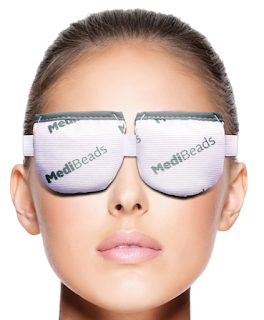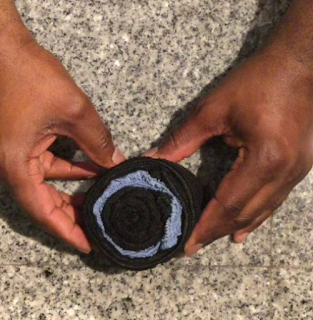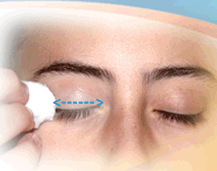The most often question I get is how often should I do the warm compresses and for how long.
The short answer is 15min 2x per day as hot as you can stand it without burning the skin.
We do know that Warm Compresses are the only natural way to open the meibomian gland orifice and liquify the meibum oil in the meibomian gland. (Even if warm compresses make some patients’ eyes feel worse [which can happen due to heat making inflammation worse], heat is still the only natural way to open the meibum orifice & get the meibum oil more liquidy and flowable. If heat makes a patient worse, I tell them to do the warm compresses, but then put cold ice packs or ice on eyelids).
I am dying to get one of these:
The melting points of meibum, though, can vary from patient to patient, which can make it hard to determine the best temperature and duration for each patient but generally, most devices have a maximum temperature of 110 °F which is considered the best temperature to melt the meibum. I have always suspected patients with inflamed eyelids or rosacea (or a high inflammation diet) have a higher meibum melting point.
1. How hot should the compress be?
2. For how long should I put the compress on?
3. How exactly should I do the warm compresses?
4. How many times a day should I apply warm compresses?
5. Should I massage my eyelid margin?
6. How should I massage my eyelid margin?
7. Should I self-express my glands?
8. What drops should I use?
9. Is it ok to wear makeup?
10. Should I throw out my makeup?
11. How best should I dilute the Tea Tree Oil?
12. Is Avenova equivalent truly to Tea Tree Oil in getting rid of Demodex?
But there is some data to answer some of these questions:
1. How hot should the compress be?
Dr. Korb and Dr. Blackie, who are excellent optometrists, have done the most research on this question that I could find thus far:
Reported melting temperatures of normal meibomian secretions vary significantly with the majority of reports ranging from 32 to 40°C; severely obstructed meibomian glands have considerably higher melting points. Only using mildly warm water may not be adequate to relieve the meibomian gland obstruction. Therefore, each degree of temperature increase over 40°C could be critical in melting severely obstructed material. However, increasing temperature without safety controls raises the issue of potential thermal damage to the cornea [though I have never seen this or read a case report of burning the cornea as one would usually have so much pain from burning the skin that it would not be possible to burn the cornea with just a hot compress]. Based on the most conservative safety thresholds in the literature, temperatures below 40°C will not result in thermal injury to the cornea or crystalline lens.(Reference 1 below)
They created the LIPIFLOW machine which provides steady state temperature of 42.5°C for 12 minutes at the eyelid margin.
For daily cleaning, this means the water should be very warm but not hot enough to cause pain or burn the skin.
2. For how long should I put the compress on?
Dr. Korb says 15minutes is the best. But no one I know really has 15 minutes 2-3 times per day to do there warm compresses. Thus it may be better to do warm compresses more often (but not within 2 hours of each session–see below) 3 times a day instead of 2 times a day for as long as you can.
3. How exactly should I do the warm compresses?
The only good study I could find to say it was superior is called the Bundle Method.
Again, the bundle methods sounds lovely, but most patients I know do not have time to do this. Thus any type of dry or wet heat helps. How much it will help for you depends on many factors: how many glands you have, is there any scaring in the glands, your age, your hormone status, what other meds are you on.
4. How many times a day should I apply warm compresses?
Likely the best is at least 2-3 times per day.
What we do know is from a study by Dr. Korb & Dr. Blackie: the below tells us, you need to apply some pressure (not too hard) on the eyelids for about 8-20 seconds
“The results show that a single central meibomian gland can be drained of its liquid secretion in 8-20 seconds upon application of a constant force of 1 g/mm2. After a central optimally secreting gland has been drained of its liquid secretion, it takes a mean time of 2.17 ± 0.49 hours to again secrete liquid during waking hours, using the same amount of force to express the new liquid secretion. At that serial expression when liquid secretion is first observed, it then takes approximately half of the time required to drain the gland originally to redrain the gland, indicating a partial recovery. Furthermore, the minimal amount of liquid secretion obtained upon diagnostic reexpression after drainage suggests that a meibomian gland in this condition may contain inadequate liquid secretion to be available with habitual blinking, which applies a force less than 1 g/mm2.“ Reference 3,4 below.
5. Should I massage my eyelid margin?
Yes. Studies show massaging pumps out the oil, especially if the oil has been melted with warm compresses beforehand.
6. How should I massage my eyelid margin? And can I massage my eyelids too much?
This is a controversial one. I recommend massaging for 20 seconds with warm water applied to eyelids at same time (mostly to save time), or with a warm compress as noted below. The key thing to remember is that the warmer the better but do not burn your skin. I have not heard of massaging your eyelid too much if there are no skin issues.
7. Should I self-express my glands?
It depends on what we mean by “self-express.” Some patients I know pinch their eyelid margin trying to push out the oil for relief. I could not find any studies to show this is dangerous, but my main concern would be a potential corneal abrasion from scratching the eye. Using an instrument to self express again would be a concern for potentially scratching the cornea. As long as this self expression is not done too aggressively, it makes does not seem to be dangerous. But again we do not have good studies to show it is dangerous that I could find.
8. What drops should I use?
There are many that can be used. The best is a non-preserved tear. A ‘no-drug company money” study showed that Retaine is the best. I have a post on this which I will link up shortly.
9. Is it ok to wear makeup?
Likely yes as long as you are taking off the make up completely. I could not find any study saying make up permanently clogs the glands if removed. Many of my severe dry eye patients, though, have stopped being able to use make up as they do feel it makes their eyes feel worse even if they remove it completely.
10. Should I throw out my makeup?
When I was a resident, we used to recommend patients throw out their make up if we saw “Blepharitis”–the catch all phrase for bacteria and now Demodex mites seen on the microscope. We now know that the bacteria & mites will come back even if you get new make up. Likely it makes sense to throw out the make up every year or 2 but I do not have studies to back this up.
11. How best should I dilute the Tea Tree Oil?
Different patients and their skin prefer different dilutions. 50% dilution with coconut oil, mineral oil, olive oil is likely best. I use pure tea tree oil “diluted” on a warm wet towel to clean my eyes. Likely it does not dilute very much as oil and water do not mix, but this works best for me.
12. Is Avenova equivalent truly to Tea Tree Oil in getting rid of Demodex?
The Avenova company says they are but there are no head to head studies. I do use both and find both to work. I prefer Tea Tree Oil when my eyes feel particularly crusty or uncomfortable as one can feel it working. The Avenova feels like water but that is a good thing especially if you have very sensitive skin. My kids prefer Avenova!
2. E. GOTO, Y. MONDEN, Y. TAKANO, ET AL.TREATMENT OF NON-INFLAMED OBSTRUCTIVE MEIBOMIAN GLAND DYSFUNCTION BY AN INFRARED WARM COMPRESSION DEVICE. BR. J. OPHTHALMOL., 86 (2002), PP. 1403-1407
3. A. MORI, J. SHIMAZAKI, S. SHIMMURA, H. FUJISHIMA, Y. OGUCHI, K. TSUBOTA
DISPOSABLE EYELID-WARMING DEVICE FOR THE TREATMENT OF MEIBOMIAN GLAND DYSFUNCTION. JPN. J. OPHTHALMOL., 47 (2003), PP. 578-586
4. Y. MATSUMOTO, M. DOGRU, E. GOTO, ET AL.EFFICACY OF A NEW WARM MOIST AIR DEVICE ON TEAR FUNCTIONS OF PATIENTS WITH SIMPLE MEIBOMIAN GLAND DYSFUNCTION. CORNEA, 25 (2006), PP. 644-650
5. R. ISHIDA, Y. MATSUMOTO, T. ONGUCHI, ET AL. TEAR FILM WITH ORGAHEXA EYEMASKS IN PATIENTS WITH MEIBOMIAN GLAND DYSFUNCTION. OPTOM. VIS. SCI., 85 (2008), PP. 684-691
6. P.S. BILKHU, S.A. NAROO, J.S. WOLFFSOHN. EFFECT OF A COMMERCIALLY AVAILABLE WARM COMPRESS ON EYELID TEMPERATURE AND TEAR FILM IN HEALTHY EYES. OPTOM. VIS. SCI., 91 (2014), PP. 163-170
7. H. PULT, B.H. RIEDE-PULT, C. PURSLOW. A COMPARISON OF AN EYELID-WARMING DEVICE TO TRADITIONAL COMPRESS THERAPY. OPTOM. VIS. SCI., 89 (2012), PP. E1035-E1041.
8.
CONTACT LENS AND ANTERIOR EYE
VOLUME 38, ISSUE 6, DECEMBER 2015, PAGES 430-434
TEMPERATURE PROFILES OF PATIENT-APPLIED EYELID WARMING THERAPIES
HTTPS://DOI.ORG/10.1016/J.CLAE.2015.06.002GET RIGHTS AND CONTENT
Abstract
Purpose
Methods
Results
Conclusions
Optom Vis Sci. 2012 Jul;89(7):E1035-41. doi: 10.1097/OPX.0b013e31825c3479.
A comparison of an eyelid-warming device to traditional compress therapy.
Pult H1, Riede-Pult BH, Purslow C.Author informationAbstract
PURPOSE:
METHODS:
RESULTS:
CONCLUSIONS:










